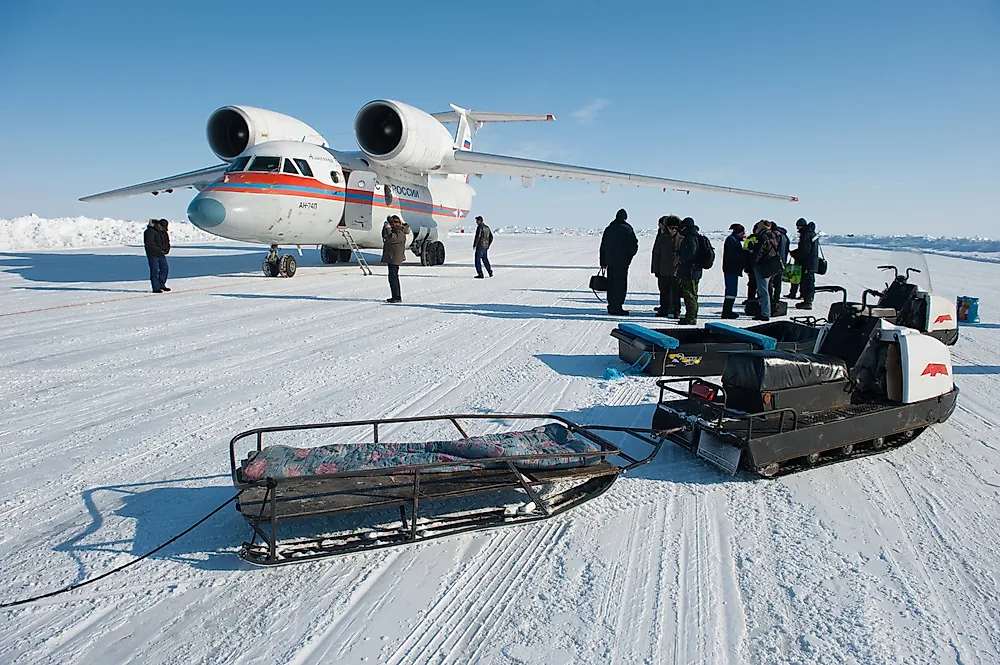What Is A Drifting Ice Station?

A drifting ice station is a manned research facility that is put up on the high latitudes of the Arctic which are used in scientific research. All the drifting ice stations in history have been established by the USSR and its successor, Russia. A total of 41 drifting ice stations have been set up in the Arctic since the first scientific station was set up in 1937. The final drifting ice station to be set up during the Soviet Era was the NP -31 which operated between 1988 and 1991. The Arctic expeditions were temporarily suspended for 12 years after the collapse of the Soviet Union, with Russia organizing its first drifting ice station expedition in April 2003.
Scientific Studies
Modern drifting ice stations are packed with the latest scientific equipment to enable scientists to conduct scientific measurements and studies. Some of the fields of a study carried out at the drifting ice station include marine biology, oceanology, geophysics, meteorology, hydrochemistry, aerology, and hydrophysics. About 3,900 meteorology measurements and about 650 ocean depth assessments are conducted over the course of a drifting ice station’s lifetime, as well as about 650 launches of research balloons. The scientist on board a drifting ice station regularly measure the coordinated of the ice floe on which they are based, to calculate the speed and direction of the ice floe’s drift.
Notable Examples
The USSR conducted the majority of the drifting ice station expeditions, and Russia has commissioned all other subsequent expeditions. The first drifting ice station to be commissioned was the NP-1 (North Pole-1) which was launched by the Soviet Union on May 21st, 1937. The station operated in the Arctic for nine months until the expedition expired on February 19th, 1938 and all four scientists on the expedition were honored by the Soviet government. The ice floe on which the drifting ice station was setup managed to drift for a total of 1,770 miles and held the record for the longest distance drifted by a drifting ice station for over a decade. The NP-22 (North Pole-22) mission operated between September 1973 and April 1982 and held the record for the longest drift distance of a drifting ice station, standing at 10,606 miles. The NP-22 was also the longest expedition as it lasted for nine years. The most recent expedition was the NP-2015 (North Pole-2015), which was conducted between April 2015 and August 2015. The drift distance of the 2015 expedition was measured to be 443 miles.
Establishing A Drifting Ice Station
Drifting ice stations are classified into two groups based on the type of ice surface on which they are perched. The two types of drifting ice stations are stations that drift on pack ice and stations that drift on ice islands such as glaciers. The stations are named as NP (North Pole) and an ordinal number such as NP-2 or NP-31. Before the establishment of a drifting ice station, a research mission is launched to search for a suitable ice floe or glacier fragment to put up the station. The research mission is extensive and involves the use of nuclear-powered icebreakers, research vessels, and helicopters.











